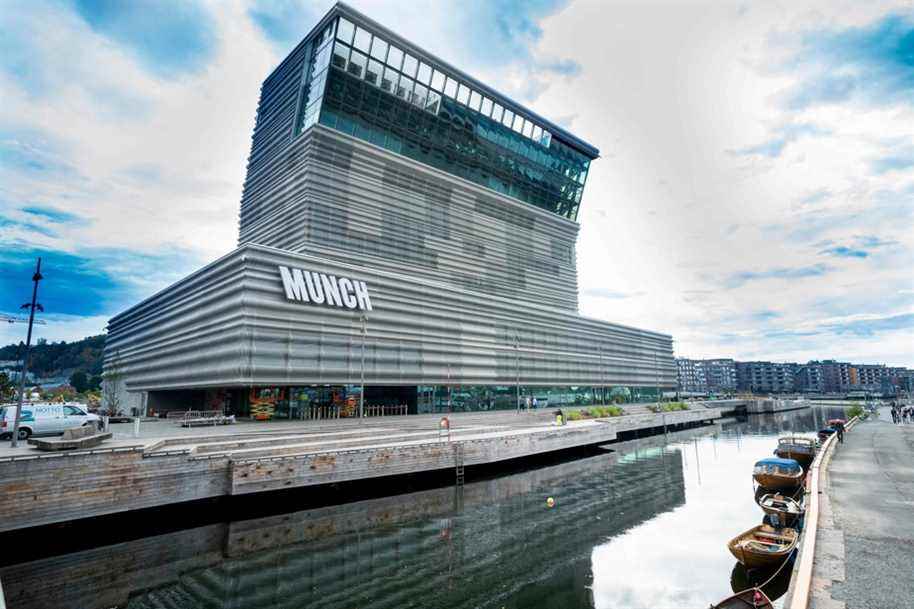(Oslo) He called them his “children” and, like a good father, he balked at the idea of this extremely large family being separated: more than 26,000 works by Munch, including gems universally known as The Scream, have a new home in Oslo.
Goodbye to the old, obsolete, poorly secured and remote building in the east of the city. This Friday, the Munch museum takes up its new quarters in the hypercentre inside a spacious, modern and… disparaged tower.
“It is perhaps the largest museum dedicated to a single artist,” says museum director Stein Olav Henrichsen, taking a tour of the owner.
With its 13 floors and 26,313 m2, the new building called “Lambda” offers five times more exhibition space than the gloomy building that until now housed the national treasure in the popular district of Tøyen.
A hardened bachelor and childless, Edvard Munch (1863-1944) bequeathed his work to the late-chosen municipality of Oslo at the expense of the Norwegian state. The initial legatee, the state had fallen under the control of Nazi Germany, who saw in this pioneer of expressionism a representative of “degenerate art”.
On the edge of the fjord, just behind the opera house, the new museum designed by the Spanish architectural firm Herreros repairs a historical injustice by giving the artist the setting his work deserves.

PHOTO STIAN LYSBERG SOLUM, FRANCE-PRESS AGENCY
A self-portrait of Munch greets visitors.
Some 500,000 people are expected – and more than a million hoped for – to come and contemplate the some 200 works permanently presented in a space of 4,500 m2.
In the midst of gloomy recurrences such as anguish, despair and death, a few less depressing puffs: love, self-portraits, landscapes … The pale complexion of naked, sick or lifeless bodies respond to the glowing colors of the manes or the heavens.
There is of course The Scream, an emblematic motif of which the museum has several copies (a painting, a drawing, six lithographs and multiple sketches), and other major works such as Vampire, Our Lady Where The sick child.
But also countless little-known pieces, sculptures, photographs, a film and monumental paintings (The sun, Researchers) which, during construction, had to be hoisted through a special slot, then sealed.
“Munch wanted to have a museum. He referred to his works as his children and he wanted them all to be brought together in a collection, ”explains curator Trine Otte Bak Nielsen. “I think he would be very happy to see what we did”.
A “brutal building”

PHOTO BEATE OMA DAHLE, FRANCE-PRESS AGENCY
The new museum designed by the Spanish architectural firm Herreros repairs a historical injustice by giving the artist the setting his work deserves.
However, the building is not unanimous. Its slanting top makes it wince and the bright bay windows promised on the drawing boards are now hidden by aluminum rails that some resemble hideous “safety barriers”.
As early as 2019, the art historian Tommy Sørbø had taken up the pen to denounce a “sacking” of Oslo, a “predicted catastrophe”. He persists and signs today, “at least for the exterior and the entrance”.
“The hall looks like an airport, warehouse, hotel or commercial building,” he told AFP. “Absolutely nothing in the choice of colors and materials announces that the place is home to one of the greatest artists in the world.”
The management, it is round back. The museum, she assures, must provoke, just as Munch’s work had done in his time.
“The building is very suitable for the collection, because it is a monumental building, it is a brutal building, located in the heart of the city and which requires reflection,” says Mr. Henrichsen.

PHOTO BEATE OMA DAHLE, FRANCE-PRESS AGENCY
Some 200 works are permanently presented in a space of 4,500 m2.
The damn “crash barriers” will they at least deter evil spirits? Over the years, Munch’s work has been the subject of multiple thefts and burglaries in Norway.
One of the most spectacular stunts had seen criminals seize the Shout and of Our Lady in the old Munch museum in 2004. An operation aimed at entertaining the police in the aftermath of a bloody heist in a bank and which fortunately had a happy ending: the two masterpieces were found.
“It’s probably the safest building in Norway, but you won’t realize it: the security is very low key, because we want the focus to be on art,” says Henrichsen.
“I can proclaim it publicly: there will be no theft here.”
